ppt - UNEECC
advertisement
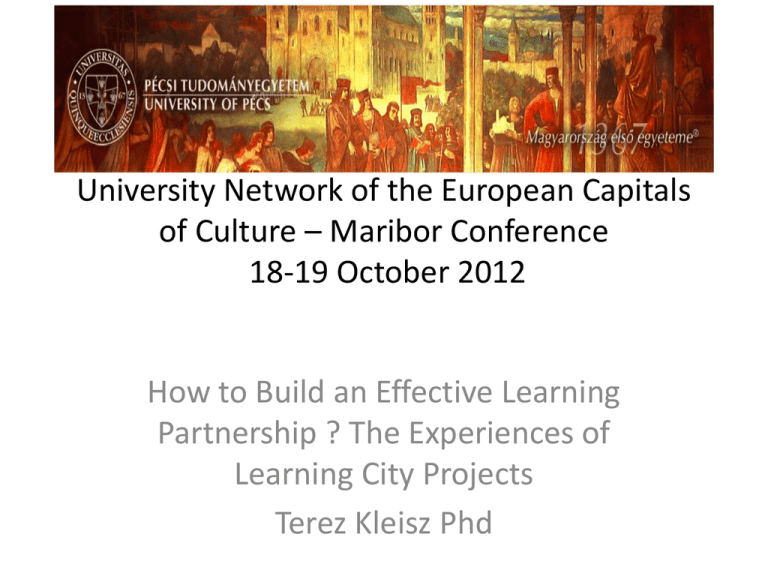
University Network of the European Capitals of Culture – Maribor Conference 18-19 October 2012 How to Build an Effective Learning Partnership ? The Experiences of Learning City Projects Terez Kleisz Phd EU LLL Programme • R3L+ Learning regions in the light of the Common Quality Assurance Framework 2009-2011 • www.learning-regions.net; www.learningregion.pbworks.com • European Storehouse on the Local and regional Dimension of LLL (Eurolocal) 2010-2011 http://eurolocal.info/ Key features/labels of contemporary developed societies Transformations within the societies generating change of the societies Late modern / Postmodern ( J. F. Lyotard) Postindustrial ( Daniel Bell, Alain Touraine) Knowledge Society/Economy ( Alvin Toffler, Nico Stehr Information Society ( Frank Webster Network Society ( Manuel Castells Creative Society ( Richard Florida) The Consumer Society ( Zygmunt Bauman) The Learning Society (transforning the culture of society) City branding :developing a shared vision of the city in years to come – create distinction on the global landscape ( symbolic capital) Smart cities Digital cities Educating cities Science cities Knowledge cities Creative cities Healthy cities European Cities of Culture LEARNING CITIES, LEARNING REGIONS. LEARNING COMMUNITIES Under that Label Educating City Movement At present :371 European 58 American, 16 Asian, 6 African cities UK Learning City Network ( 80 cities); Southampton (1997) Liverpool(1996) Germany: 2000-2006; 2006-2008 70 + 91 learning regions Finland: 20 cities: ESPOO Greece: The Polisnet Programme Gothenburg, Dublin, Kaunas , Limerick Under that Label Canada: Halifax, Vancouver Australia: Victoria State, Adelaide Japan: Kakewaga,Okayama South-Korea: 76 cities (since 2001) China : 2011: appr. 210 cities South Africa: Cape Province Curitiba in Brazil Udaipur ( India) According to Jin Yang ( UNESCO): est.: 1000 in the world UNESCO-Global Learning Cities Network A global network of learning cities would provide technical backstopping to many cities, and promote policy dialogue and peer-learning among them, as well as capacity development. The development of a comprehensive framework for assessing learning cities and for a Global Learning City Index. Learning Regions A TOOL for collective capacity development : a system that works; • Partnership networks, specific cooperation structure as an organizational response to the diversity of needs: dynamic and open network • Sufficient size to encompass and mobilize the key players for the purpose of LLL • Across organisations/ sectors: Business + Community + University/Research Inst./Academia • Cooperative and collective learning Definitions …. is a city in which communities attempt to learn to learn collectively as a means of changing their own futures. ( OECD 1993) „ as collectors and repositories of knowledge and ideas and that provide … an environment or infrastructure which facilitates the flow of knowledge, ideas and learning.”- Florida Learning region is providing a structure and a perspective to aid forward planning (Nyhan/ Heydebreck(2004) „Learning regions … do not only adapt to new circumstances, but also reflect critically on their own institutions and learning processes – in a double loop understanding.” (Presisinger-Kleine, 2011) Definitions A Learning Community is a City, Town or Region which mobilises all its resources in every sector to develop and enrich all its human potential for the fostering of personal growth, the maintenance of social cohesion, and the creation of prosperity.(Longworth 1999) collaborative action, as “a way to envisage how all actors sharing the same local context learn to cooperate with one another in addressing economic and social innovation.” (Nyhan, 2007) Learning Region a geographical area or locality of a certain size whose inhabitants share common objectives or problems. This does not have to be a statutory regional entity All learning regions are unique, based on their own particular characteristics, history, strengths and weaknesses Not one size fits all ! Learning the combination of processes throughout a lifetime whereby the whole person – body (genetic, physical and biological) and mind (knowledge, skills, attitudes, values, emotions, meaning, beliefs and senses) – experiences social situations, the content of which is then transformed cognitively, emotively or practically (or through any combination) and integrated into the individual person’s biography resulting in a continually changing (or more experienced) person. Jarvis, 2009,p.25 Learning is Social It is in relationship – in the interaction of the inner person with the outer world – that experience occurs and it is in and through experience/reflection/experimentation that people learn. • Formal/nonformal/informal learning • Action learning / Dialogue of Active Players • Collective self-reflection, deliberation, genuine change of ideas: transformation/ change Development of the Idea of LLL Earlier orientations: for the humanity of the learner – for HUMAN GROWTH developing learners as persons ( critical awareness, knowledge , informed citizens etc.) IDEALS like EMANCIPATION Dewey (1916): Education and Democracy; Lindeman (1926): The Meaning of Education;Yeaxlee/ British Assoc. Of Adult Education:1919 Report 1970s:UNESCO Fauré Report (1972): Learning to be Delors Report(1996):Learning to know/ to be /to do/to live together / to care for the planet Worklife education / Work-based education: LLL ( 1995 EU) Learning organisations as a means to adapt, as a sort of management theory; investing in people; means to other ends: a human capital concept; HRD Continuing professional development Recurrent education Lifelong Education Eurich (1985): Corporate Classrooms Lifelong learning has become a major focus of policy attention Why LLL? Economic imperatives of the competitive global capitalism, knowledge-intensive economy; Employability-agenda; New forms of KNOWLEDGE and SKILLS = STRATEGIC RESOURCE; HRD Sociocultural Needs: Social Inclusion, Integration – Active Citizenship, Participation Political needs: Innovation in Public Policy, new Governance Environmental Imperatives • PROFIT- PEOPLE- PLANET MAKING • THINK and ACT both Global and Local ! EU initiatives LLL „is the key to employment, economic success and allowing people to participate fully in society.” The EU ‘Year of lifelong learning’ in 1996 • 2000 Lisbon Strategy; The Lifelong Learning ( Memorandum (EC, 2000) • Towards a European Learning Society (TELS) projects 19982001 (Survey of Lifelong Learning practice in 80 cities) The European networks of learning region programme (R3Ls) 2002; PALLACE (2003-2005): Promoting Active Lifelong Learning in Australia, Canada, China and Europe LILARA: (Learning in Local and Regional Authorities) R3L+; EUROLOCAL INNOVATION - Creative Capital + New Economy discourse Technology / Talent / Tolerance Florida: The Rise of the Creative Class (2001) Knowledge Co-Creation, knowledge transfer Innovation- Creativity – Connection HUB: geographical closeness, metropolis: stimulative creative milieux, chance encounters; placecompetitiveness; attracting talents; Bohemian Index; Melting Pot index; Diversity or Gay Index; Human Capital Index (BA-s) etc. OECD • Regional competitiveness and skills (1997); Economic and cultural transitions towards the learning city – the case of Jena (1999); • Cities and regions in the new learning economy (2001); • Learning how to innovate – knowledge regions (2001); • Learning how to innovate – the role of social capital (2001) Innovative regions Innovation as a community-based ‘collective learning’ process Innovative regions are identified as those having the capacity to set up collaborative learning networks – webs of interactions – on how to improve their practice. CEDEFOP The European Centre for Development of Vocational Training Ref. Series 68. (2005) Learning together for local innovation: promoting learning region Bjorn Gustavsen Barry Nyhan Richard Ennals Typology follows Critique The regional innovation systems approach is not particularly predicated on learning, not even referencing such literature (Cooke, 1992), but rather on knowledge and innovation. what ‘triple helix’ advocates see as easy is, in fact, exceptionally problematic. there are major institutional barriers between industry, research universities and governments Learning Cities’ Diversity Not one size fits all ! A geographical area or locality of a certain size whose inhabitants share common objectives or problems. This does not have to be a statutory regional entity All learning regions are unique, based on their own particular characteristics, history, strengths and weaknesses What works ? Enabling structures to learn together from each other Real life-issues, action learning; Across boundaries: Channels for Dialogue and Cooperation Team working, stakeholder networks, synergy, crossorganizational participation; Binding together a community with a diverse population mix; Shared values, principles, goals and concerns, Learning climate in the community; The Culture of Change; Network Culture; Proactivity to the needs of the environment What works Wider supporting legal and policy contexts ( convergence) Engagement/ Publicity/ Accountability: Each local community partnership is required to publish an engagement plan and a local community plan and to monitor and publish various engagement indicators and other outcome measures of meeting the specified local aims and objectives Quality Dimensions of Learning Cities Quality Framework • PARTNERSHIP AND NETWORK: • PARTICIPATION • PROGRESS AND SUSTAINABILITY • LEARNING CULTURE 1. Partnership and network • Common and shared vision of the partnership/network explicitly defined and promoted Opportunities are created to commonly map and exchange expectations and scenarios about possible futures There is clearly defined principles and methods to seek / gain input on hopes and aspirations for the partnership and to gain, analyse and prioritize common themes for the partnership The vision statement is easy to understand, regarding clarity and lack of ambiguity, vivid and clear picture, description of a bright future, memorable and engaging wording, realistic aspirations, alignment with organizational values and culture. There is a clear public expression of the vision statement and clear responsibilities to communicating the vision regularly, creating narratives that illustrate the vision. It is ensured that the vision statement of the partnership/network is reviewed and revised if necessary, based on achievements and progress Partnership and network • Common mission of the partnership/networks explicitly defined describing the reasons for existence, fundamental purpose and values of the network. There is working methods in place to stimulate discussion and gain input on aims and objectives. Availability of founding document of partnership / network expressing joint agreements Clear public expression of aims, objectives and target groups of the partnership/network PARTNERSHIP and NETWORK • Objectives and quantifiable targets specified and commonly shared • Principles and protocols to govern ongoing collaboration are explicit and shared • Clear channels of communication between partners and networks exist • Formal structures exist for managerial and operational responsibilities • Coverage: scope of stakeholders represented in partnership • The act of stimulating actors to form a partnership and keeping them motivated on an ongoing basis throughout the cooperation.The ability to flex, adapt and re-shape as unforeseen circumstances emerge is both important and a pre-condition to keep partners on-board adapting to THEIR needs which were not initially identified. PARTNERSHIP: Trust and openness amongst partners exists (even within competitive conditions) Conditions and communication channels are ensured that information is shared among partners. Conditions are ensured that disagreements that could occur are managed through a constructive dialogue by all members of the network. Achievements are recognised within partnership and impact of specific results are documented/promoted within the network. Self-organisation of partnership Equal opportunities of visibility Equal opportunities to access relevant information Disclosure of relevant information, both internal and external (among partners and at a wider audience) PARTICIPATION -Relevant key stakeholders are actively engaged in the partnership/network -Involves and mobilizes the wider public or community -Network is known and understood by general public - Visibility -Clear measures to involve those most distant from learning opportunities -Partnership is flexible, elastic and open for change -Dissemination strategies exist to inform constituents PROGRESS and SUSTAINABILITY • The capacity to continuously understand results, reasons; and the capacity to use this understanding to influence ongoing planning • Monitoring and evaluation informs strategic direction and both policy and practice. • Evaluation and review (quality) are prioritised and internalized – seen as a core activity and not just an add-on. • Results and findings of monitoring, evaluation and review must be able to be widely understood. . • Flexibility and openness of partners to accept results (failures as well as successes) and act on results. • Benefits identified are broad-based (not just education-linked). Links between all these dimensions (as to the value of learning) are understood and demonstrated for the sake of sustainability, for the sake of influencing policy and professional practice at wider levels LEARNING CULTURE • Learning-based strategy to be mainstreamed into integrated local and regional development strategies. Inclusion of learning as a key element to respond creatively to the forces of change. • Learning gaps are documented and related with the quality system • Capacities for learning promotion are created/developed • Motivational strategies are in place for adults within the community of learners. • Creating a climate for open dialogues, an environment of challenge and trust , exploring issues from many points of view and perspectives , acting as "critical friends" .Consciously work through groups and alliances in order to build support for joint actions. Deficits/hindering quality • in the case of big partnership projects won through bidding when mainly the core organizers initiate the idea and attractive resources are promised to invite partners to join the project without proper elaboration of common concerns and mutual interests, without the effort to build up coherent understanding. • Field of POWER-aspect • Sustainability A quote from Proust • The real voyage of discovery consists not in seeking new landscapes but in having new eyes. • Thank you.
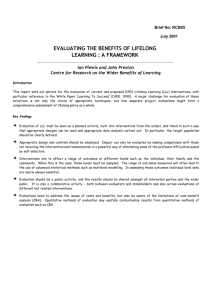
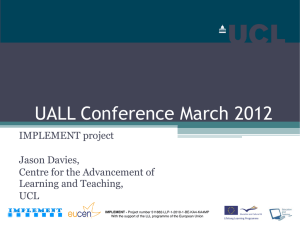
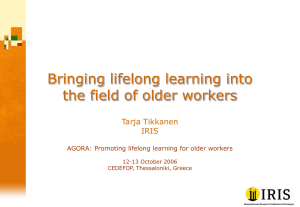
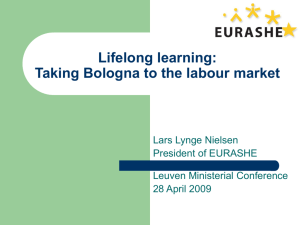
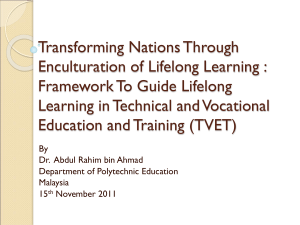
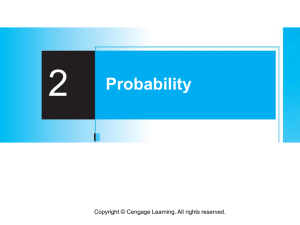
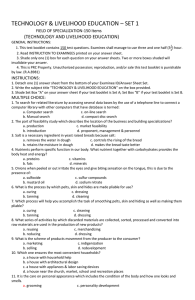
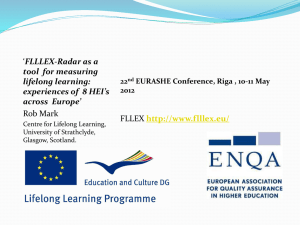

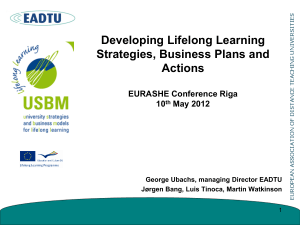
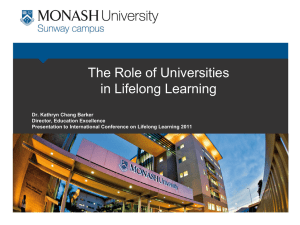
![Temperature - fC] Sedimentation Rate -...](http://s2.studylib.net/store/data/010764909_1-a00b123e11c638325094b52c8d3b32c0-300x300.png)